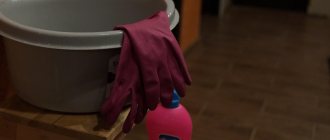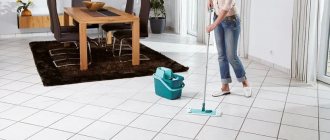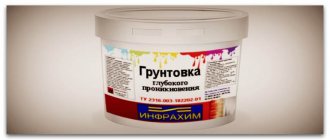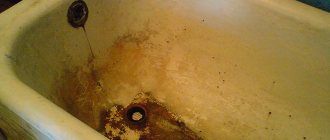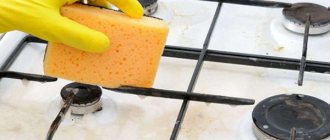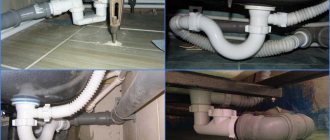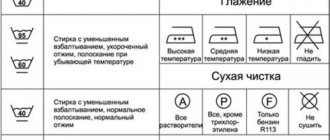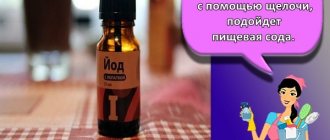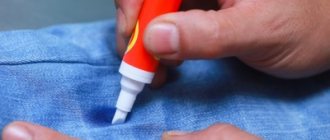Floor tiles are available in specialized stores in a variety of designs and color styles (by the way, porcelain stoneware and metlakh tiles are very popular today). It provides any room with a different level of aesthetic subtlety.
Expert opinion
Evgenia Taran
In addition to aesthetic benefits, floor tiles are also more durable than carpet, linoleum, or wood and are easier to clean. Dirt and debris that are deeply absorbed into the carpet fibers can be washed out of tile flooring relatively easily. Of course, this requires suitable tools and means.
Let's figure out how to clean the tiles on the floor from stubborn dirt.
Tile features
This material is very wear-resistant and does not rot, so it is ideal for decorating bathrooms and rooms where the level of humidity is always high and there are temperature changes. However, over time, plaque and dirt stains form on the tiles, and the grout between the tiles darkens and takes on an unsightly appearance.
Manufacturers have learned to make super-durable, ergonomic materials for bathroom design. But they also require careful care. Often, you can ensure the beauty of the tiles in the bathroom using improvised means. This will save money, and the bathroom will always be clean.
Primer
Now let's look at how you can clean ceramic tiles from primer after repair. White stains often remain on floor tiles, since the installation of wall cladding is carried out after it has been laid. It is advisable to spread a protective film on the floor, but this does not always provide a 100% guarantee of protection against stains.
If the primer gets on the tile, it is advisable to wash it off with clean water as quickly as possible. When the substance dries it will harden and it will be much more difficult to wash it off. For this purpose, you can use the following tools:
- special solvent-based remover;
- acetone;
- polyurethane foam;
- fresh primer.
As soon as the stain softens, you can try to clean it off. You can also use a special scraper with a sharp blade, which can be used to remove drops of frozen paint from glass surfaces.
The primer is best washed off before it hardens with clean water or solvent
What you need to arm yourself with
Before starting work, it is important to take care of your own safety and stock up on the necessary equipment. You will need:
- Protective gloves.
- Fabric or medical mask to protect the respiratory system from household chemical vapors.
- Brushes of different hardness.
- Sponges.
- Toothbrush for cleaning darkened grout joints.
- Microfiber cloths.
When tidying up the bathroom tiles, you can use a steam cleaner, electric brushes with soft bristles, and melamine sponges.
It is important to remember that tiles can be easily scratched by means that contain abrasive substances, so these should not be used, as well as hard brushes, metal floats are especially not welcome.
Cleaning schedule
You shouldn’t let your bathroom get to the point where only general cleaning can solve the problem. Experts recommend regularly cleaning tiles. This will make it easier to keep it clean, and the surfaces themselves will not deteriorate.
From time to time, it is advisable to thoroughly clean the tiles, remembering that you should not use harsh products. Gels and suspensions containing acids, but without abrasives, are suitable. It is better to first test potent compounds on a small area of the tile.
Removing black stripes from the floor is easy!
If there are black stripes left on the floor, be it laminate, linoleum or parquet, from rubber shoes, you can easily remove them by rubbing, believe it or not, with a tennis ball. Yes, yes, just a ball; if you remember, it has such a fleecy surface. This ball is generally a useful thing to have around the house; it also makes washing down jackets and blankets easier.
Very thin strips can simply be wiped with a dry cloth, and especially greasy strips that could not be destroyed by previous methods can be carefully rubbed with a paste of damp soda.
Use of improvised means
From what is always in the house, inexpensive and effectively fights plaque, dirt, stains:
- Laundry soap. It is advisable to use the lump version. Liquid laundry soap is not so effective, even if it is from the expensive series.
- Soda.
- Toothpaste.
- Hydrogen peroxide.
- Ammonia.
- Boric alcohol.
- Lemon acid.
- White.
When cleaning tiles, you can use dishwashing gel or liquid soap. Experienced housewives advise wiping the tiles in the bathroom, including the floor, every time after water procedures.
Just a soft sponge or flannel cloth will be enough. But almost none of the ordinary housewives will find the time and patience to clean so often.
Why does pollution occur?
The answer to this question is quite simple - if the floors are not properly cared for, the tiles quickly get dirty and lose their appearance. Over time, it can become covered with such a layer of dirt that it even loses its color. Fortunately, those owners who keep their home clean are unlikely to encounter such problems. Although, for example, in the kitchen it is always more difficult to clean tiles - this is due to the specific nature of the substances that stain them. While it is easier to wash off ordinary dirt in the bathroom, it is not so easy to wipe off old grease stains.
On a note! To avoid having to resort to aggressive methods of dealing with tile contaminants in the kitchen, it is better to remove all substances that accidentally fall on it immediately using a damp cloth or sponge. Old stains are much more difficult to remove.
How to clean tile floors
Another problem that even caring owners face is contamination of the joints between individual floor elements . The base is constantly in contact with dirt, dust, various substances, it is wiped with a rag and it is considered that all work on cleaning the floor is completed. However, seams are generally more difficult to clean. This is due to the structure of the grout filling them. The fact is that it is a fairly porous and rough material, on which various contaminants easily linger. It won’t be difficult to clean the tile itself, but removing all the dirt from the seams is more difficult.
The main types of contamination of the tile itself and the seams between it are as follows:
- some types of detergents that are difficult to rinse off with water;
- dirt from the street;
- food;
- excess moisture;
- dust;
- fungus and mold;
- remnants of building materials used during apartment renovation.
Fungus between floor tiles
The grout may also darken on its own over time. Unfortunately, this process in fact cannot be completely prevented; it can only be slightly slowed down by taking preventive measures. You can also restore the seams between the elements to their former beauty by thoroughly cleaning them.
Let's start cleaning
First, the bathroom needs to be freed of everything that interferes with cleaning. It is necessary to remove all towels, bathing products: washcloths, gels, shampoos, pumice, etc.
- Remove the curtain and throw the rugs into the wash.
- Then you should identify the most contaminated areas and work on them first.
- Apply the product, rub, leave for 15-20 minutes.
- Afterwards, you can begin global cleaning of the tiles and seams.
- If the grout was originally light, you should try using liquid bleach to bleach it.
It is important to use protective gloves when working with any means, even gentle ones.
The use of folk remedies
Citric acid, soda, laundry soap, and other available products can act even faster and better than factory-made household chemicals. However, even when using them, you should take care to protect your hands and respiratory organs, especially if ammonia and boric acid are used.
Vinegar against rust stains
It is worth using 6% or 9% vinegar when cleaning tiles to remove fungal deposits and yellowness. It perfectly fights rust and salt deposits.
- Vinegar should not be used in pure form, but together with water.
- 1 part of 6% essence should be diluted with 3 parts of water.
- It is better to dilute a 9% concentrate with 5-6 parts of water.
- It is advisable to apply the product from a spray bottle.
The spraying principle should be used when applying almost all tile cleaning solutions. Be sure to rinse off the composition with clean water and wipe the surface dry with a soft cloth.
Laundry soap
Due to the fact that it contains a sufficient amount of alkali, with the help of such soap you can eliminate plaque and stains. It is important, after treating with a household product, to walk over the surface with a solution of dishwashing gel to get rid of the greasy film that remains after the soap.
Soda
A spoonful of soda should be dissolved in 100 ml of water, or you can make a thick paste by adding just a little water. Baking soda is a universal surface cleaner. It does not scratch the tiles and cleans well until it shines.
Soda can be combined with vinegar, hydrogen peroxide, and citric acid. The result will be a more effective product that will remove yellowness, rust stains, and fungus.
Lemon acid
A fairly gentle cleaner for cleaning tiles, lemon acid removes yellowness from grout well. However, you should not use fresh lemon juice, but a granular concentrated composition. It needs to be dissolved in water and applied pointwise to stains or plaque.
Once the acid has eaten away the rust or mildew, wash the tiles as usual and complete the cleaning process with water.
Ammonia and peroxide
These products also work well in the fight against stains and plaque. You should not be zealous in using ammonia or peroxide.
- Experts recommend applying the composition to stains for only 2-5 minutes and rinsing with water, and then using other cleaning products.
- You should not mix folk remedies with factory formulations, as an unexpected chemical reaction may occur.
- This can lead to the appearance of a pungent odor and the release of harmful fumes.
After renovation
Dealing with contamination after repair is much more difficult, especially when its surface is rough.
Step-by-step cleaning of flooring after renovation:
1) First of all, it is necessary to remove traces of glue. To do this, you can use vinegar diluted with water. Apply with a soft brush. Do not use metal devices!
2) Hardened putty can be removed using a scraper.
3) You can remove traces of tape with nail polish remover.
4) A soap solution will work well with the primer. Dried marks can also be soaked and removed with a sponge.
5) You can remove cement using salt. To do this, you need to sprinkle salt on the surface and add a little water. After the product has taken effect, remove with a brush.
6) Many hardened solutions can be removed using a gel-like toilet cleaner.
7) In some cases, it may take several days for the stains to completely soak out. After this, the tiles are washed with detergent.
Gasoline removes paint well. Then the floor is washed with soapy water.
